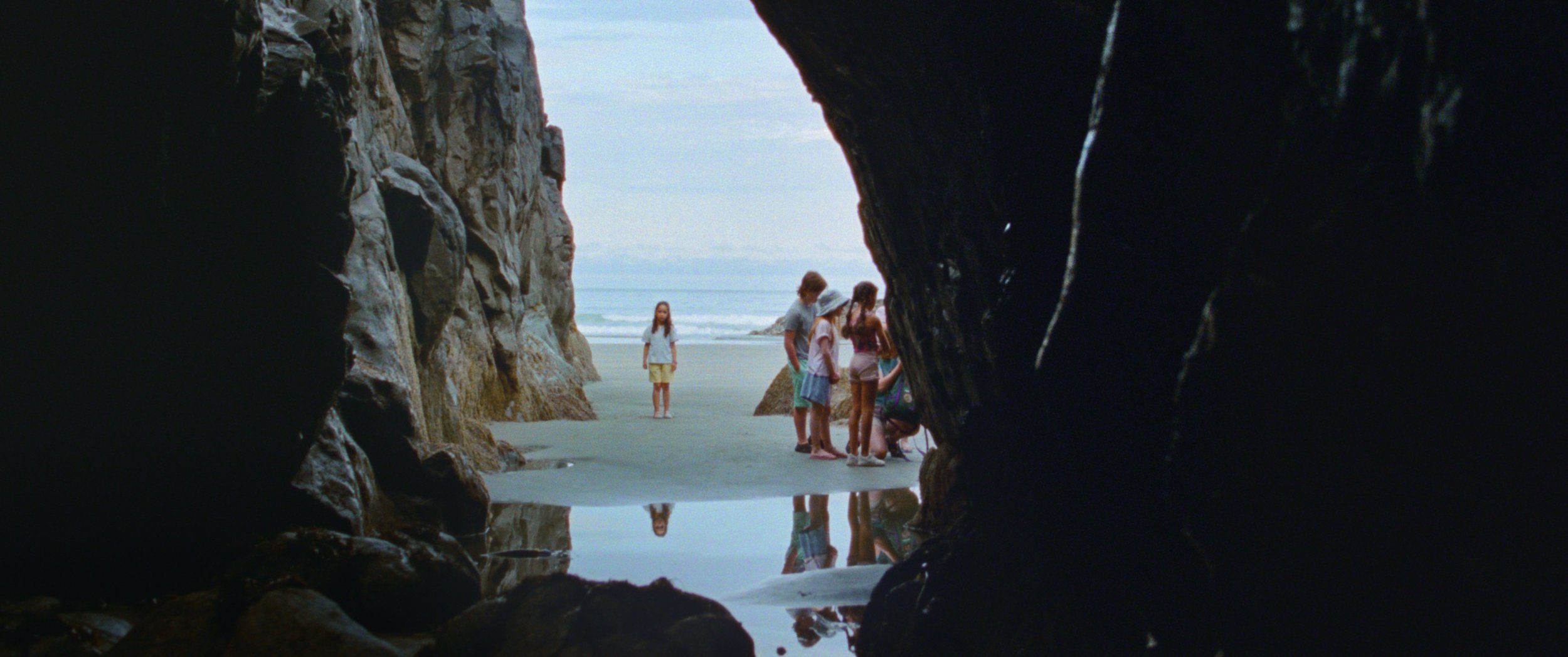Meredith Hama-Brown on Fear and Family
MIXED ASIAN MEDIA - FEBRUARY 27, 2024
By Hayley Palmer
Photos by Norman Wong
Photo taken by Norman Wong in the Official TIFF23 Portrait Studio at Fairmont Royal York, powered by Canon Canada
The opening scene of Meredith Hama-Brown’s Seagrass felt like it was pulled directly from my memories: two young girls on the deck of an island-bound ferry, pleading with their parents for money to buy soft serve ice cream. I spent my long weekends and summers doing the very same alongside my older cousin (and our likely exasperated parents). Both my ferry and Hama-Brown’s fictionalized one were headed to islands off the coast of British Columbia. Her film is clearly a tribute to the area: the twisted arbutus trees, the rocky shorelines, and the disembodied loudspeaker voice narrating, “Thank you for sailing with B.C. Ferries.”
Photo courtesy of Meredith Hama-Brown
The film, shot mainly on Gabriola Island and on 35mm film, showcases the B.C. landscape, all crashing waves and idyllic forests. Hama-Brown knew this story had to play out on an island. “Symbolically, there’s this history of Japanese Canadians during the 1940s, where they all had to move away from the coast.” There’s also the sense of being trapped and isolated. We discuss the Survivor-like implications of the setting. “In order to get off this island, you have to figure out your marriage,” she jokes.
Seagrass follows an interracial family in the mid-’90s. Japanese Canadian Judith (Ally Maki) is grieving her late mother, which puts just one more strain on her and her white Canadian husband Steve’s (Luke Roberts) relationship. In the hopes of bridging this widening fracture, they attend a self-development retreat on a secluded island with their daughters — 11-year-old Stephanie (Nyha Breitkreuz) and 6-year-old Emmy (Remy Marthaller). Here, the children face peer pressure and racial microaggressions while the adults work through their prescribed regimen of exercises meant to bring each pair closer.
Photo courtesy of Meredith Hama-Brown
But Hama-Brown makes it clear that this is not just a “will-they-won’t-they” story about divorce. Whether this couple would stay together was not the most important aspect of this film. “I knew early on that what was interesting was how these internal foundations are being ruptured for the three female characters,” Hama-Brown told me. “They were all dealing with this very deep-rooted uncertainty in different ways. I knew that everything that they were going through had to relate back to that.” The film explores themes of motherhood, shame, sisterhood, racial identity, and intergenerational trauma. But what binds these all together is fear. The title references this, and comes from a cut scene where the older daughter describes how she used to be afraid that something would come out of the seagrass and grab her while swimming.
Woven throughout the entire film are traumatic reverberations of the Japanese incarceration camps during World War II. During this period, approximately 22,000 Japanese Canadian residents — nearly half of whom were born and raised in Canada — were forcibly removed from their homes into incarceration and work camps throughout the interior of B.C.; in other provinces, they were taken to farms. Those who resisted were taken to prisoner-of-war camps. To finance these actions, the federal government auctioned off the property and possessions of the incarcerated citizens. Once the war had ended, Prime Minister Mackenzie King gave Japanese Canadians a choice: deportation to Japan or relocation to provinces east of the Rocky Mountains. The option of deportation was later abandoned due to public outcry, but not before nearly 4,000 people — many of whom had never set foot outside Canada — had already been sent to Japan.
Hama-Brown and I agreed that many people around the world — and even within Canada — are unaware of this, despite it being one of the worst human rights violations in B.C.’s history. “It’s something that has really been taken away from Japanese Canadians. I can imagine for my grandparent’s generation, there was so much shame and pain around this event that they really didn’t want to discuss what happened,” she told me . “Most people from my generation have unfortunately not learned Japanese and have not had the opportunity to have [a strong connection to] their cultural heritage. It was really robbed from them because of this displacement and fracturing of communities.”
In the film, Judith comes to terms with this for the first time. “Early on in the writing process, I knew she was confronting a lot of things around identity — around being a mother and a woman. And I knew confronting her racial identity would be part of this.” Judith reveals that she knows little of her family’s history, not due to disinterest but because of the generations of silence wrapped around this trauma.
Chris Pang as Pat and Sarah Gadon as Carol. Photo courtesy of Meredith Hama-Brown
Chris Pang’s character Pat is a charming Chinese Australian who shows the audience another side of Asian identity. “Because he's a history buff, he seems to know so much about the incarceration,” Hama-Brown explains. “But because it's something that was repressed for her parents, Judith knows even less than him.” He attends the retreat every year with Carol (Sarah Gadon), his white Canadian wife. They are a seemingly perfect parallel to Judith and Steve’s dysfunction. “What they really represent,” Hama-Brown describes, “is a projection from Judith and Steve. We always meet these people who seem to have it all. For Judith, she’s in awe of them.” Meanwhile, Steve views Pat with contempt and initiates a constant, near-childish battle of one-upmanship with him. Throughout the film, Judith becomes increasingly infatuated with Pat while her resentment grows for her husband and his shortcomings.
Remy Marthaller as Emmy. Photo courtesy of Meredith Hama-Brown
Hama-Brown says the aspects of the film about racial identity are definitely the most personal. “The type of racism that the kids are dealing with are things that happened a lot in the ’90s. They still do, but I don't think there was a language for it [then]. So often in films, the type of racism that you see is really overt and intense. But this is the type of insidious racism that a lot of people, especially those who are mixed race, grow up with. In the past 10 years, it's been a lot more common to hear othering or microaggressions and to be able to put a word to that feeling of feeling different. We didn't have words to confront this back then.” Early in the film, we witness something: Carol attempting to compliment the daughters by calling them exotic, to which Judith merely thanks her. Later, we see her try to confront Steve about his racism. “She finally puts words to it. And she immediately gets shut down. That’s really how it was in the ’90s. I was just trying to be true to real life. I think it was important to honor the truth of how that feels.”
Seagrass debuted in Canada at the Toronto International Film Festival in September 2023. It will be screened in select theaters across the U.S. and Canada during the final week of February. More information about Meredith Hama-Brown and the film can be found here.
Hayley Palmer is a student living on the unceded territories of the Musqueam, Squamish, and Tsleil-Waututh Nations. She spends her free time sitting around with friends, re-reading the same books, and playing ice hockey. Hayley makes all sorts of art, from digital illustration to photography to collages. You can find her work on Instagram.





